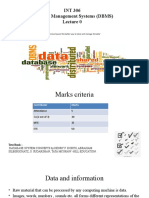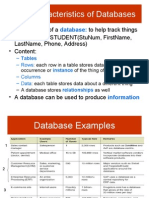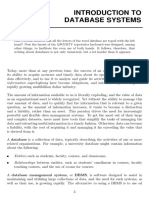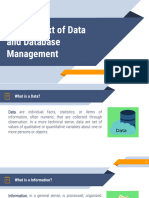0% found this document useful (0 votes)
93 views3 pagesIntroduction to DBMS Fundamentals
This document provides an introduction to database management systems (DBMS). It discusses that DBMS play a pivotal role in organizing, storing, retrieving, and managing vast amounts of data. The key concepts covered include data modeling, the relational data model, structured query language (SQL), normalization, and entity-relationship diagrams. Normalization is described as a critical technique for minimizing data redundancy and dependency through breaking tables into smaller, more manageable ones. The document concludes that understanding database fundamentals is integral for efficiently managing information systems and harnessing the power of data.
Uploaded by
anthonylrush4Copyright
© © All Rights Reserved
We take content rights seriously. If you suspect this is your content, claim it here.
Available Formats
Download as DOCX, PDF, TXT or read online on Scribd
0% found this document useful (0 votes)
93 views3 pagesIntroduction to DBMS Fundamentals
This document provides an introduction to database management systems (DBMS). It discusses that DBMS play a pivotal role in organizing, storing, retrieving, and managing vast amounts of data. The key concepts covered include data modeling, the relational data model, structured query language (SQL), normalization, and entity-relationship diagrams. Normalization is described as a critical technique for minimizing data redundancy and dependency through breaking tables into smaller, more manageable ones. The document concludes that understanding database fundamentals is integral for efficiently managing information systems and harnessing the power of data.
Uploaded by
anthonylrush4Copyright
© © All Rights Reserved
We take content rights seriously. If you suspect this is your content, claim it here.
Available Formats
Download as DOCX, PDF, TXT or read online on Scribd
/ 3























































































